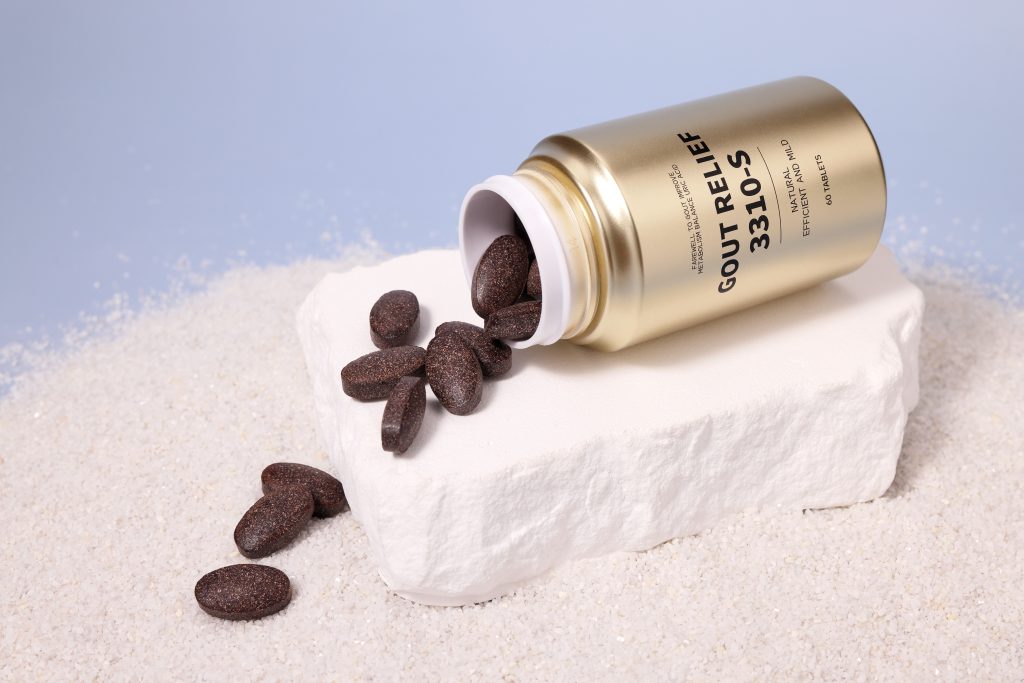Gout is an inflammatory arthritis caused by the deposition of monosodium urate (MSU) crystals, which is directly linked to hyperuricemia (high uric acid in the blood).[1] Factors like a high-purine diet, alcohol, fructose, and being overweight can increase the incidence of gout.[2][3]
The underlying pathology of gout is a persistent serum uric acid level above its saturation point (approximately 6.8 mg/dL), leading to the formation and deposit of MSU crystals in joints, soft tissues, and kidneys.[4][5]

The core principle of effective gout management is to consistently maintain serum uric acid concentration below a target level (generally <6.0 mg/dL, and <5.0 mg/dL for those with tophi).[6][7] This strategy is based on the following scientific evidence:
Uric Acid Deposition is a Dynamic Process
The deposit of urate crystals is a dynamic equilibrium. When blood uric acid levels exceed the saturation point, urate precipitates and forms crystals. Conversely, when the concentration falls below this point, the deposited crystals begin to dissolve.[4] Because the total amount of urate crystals in the body of a gout patient can be substantial (1000-3000mg), and the dissolution rate is slow, a long-term low-uric acid environment is necessary to achieve complete clearance.[7][8]
Natural Crystal Dissolution is a Slow Process
Urate crystals primarily accumulate in tissues with poor blood supply, such as cartilage, tendons, and synovial membranes. This poor vascularity limits the effectiveness of medication delivery and the body’s natural clearance mechanisms. Furthermore, crystals can become coated with a protein shell, which further slows down the dissolution process. Research shows that even when serum uric acid is brought down to a level that allows for dissolution, it can take several months to years to completely clear existing crystal deposits.[8][9][10]
Kidney Function and Uric Acid Excretion are Linked
Approximately 90% of individuals with primary gout have impaired renal excretion of uric acid.[11][12] This is a persistent issue that requires long-term use of medications that either promote uric acid excretion or inhibit its production.[13][14] However, long-term use of some conventional drugs can potentially harm kidney function, creating a vicious cycle where treatment might exacerbate the problem. If treatment is stopped prematurely, uric acid levels will rise again, causing even the dissolving crystals to re-harden.[15][16]
Therefore, achieving a complete and lasting remission from gout requires patience, psychological readiness, and a comprehensive approach that addresses these three key areas simultaneously.

BISPIT GOUT RELIEF 3310-S utilizes a low-temperature, cold-extraction technology to preserve the active compounds of its herbal ingredients. Its cell-level small molecules are designed to penetrate the protein membrane that coats tophi (gouty deposits), potentially shortening the crystal dissolution time.

Key ingredients like Celery Seed, Chicory, Kudzu Root, and Mulberry Leaf work synergistically to effectively lower uric acid levels without overburdening the kidneys.[17][18][19][20] Additionally, natural lubricating and anti-inflammatory components such as Glucosamine and Gold Coin Grass (Jin Qian Cao) are included to help soothe the discomfort that can occur as crystals dissolve.[21][22] This three-pronged approach aims to create a long-term solution for gout management and prevent recurrence.
Sourceshelp
